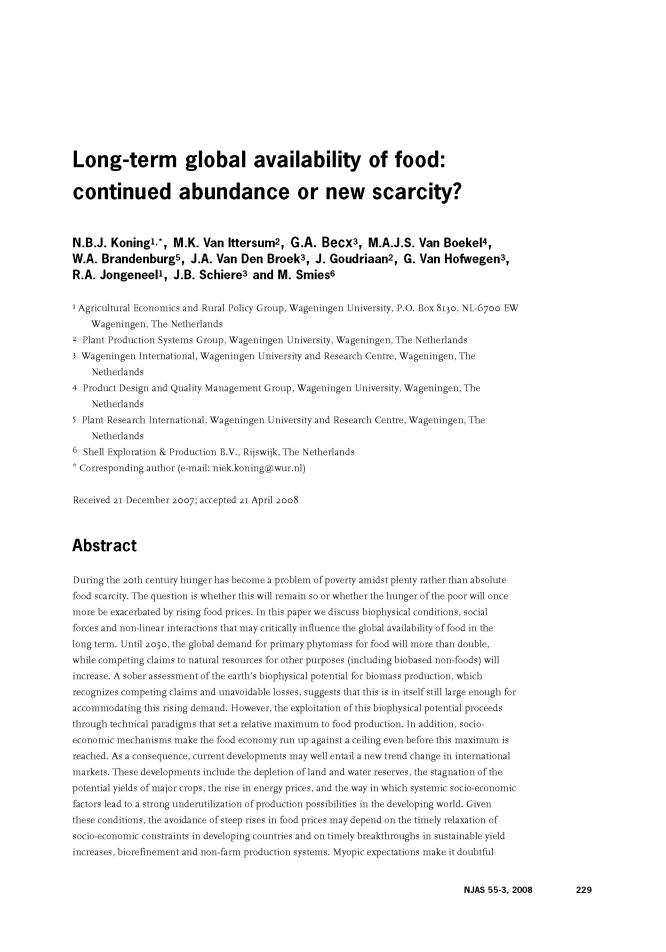Resource information
Cite the article using an appropriate bibliographic citation (i.e. author(s), journal, article title, volume, issue, page numbers, DOI and the link to the definitive published version on ScienceDirect)
Maintain the integrity of the article
Retain copyright notices and links to these terms and conditions so it is clear to other users what can and cannot be done with the article
Ensure that, for any content in the article that is identified as belonging to a third party, any re-use complies with the copyright policies of that third party
Any translations, for which a prior translation agreement with Elsevier has not been established, must prominently display the statement: "This is an unofficial translation of an article that appeared in an Elsevier publication. Elsevier has not endorsed this translation."
For permission to use documents beyond permitted here, visit our permission pages.
During the 20th century hunger has become a problem of poverty amidst plenty rather than absolute food scarcity. The question is whether this will remain so or whether the hunger of the poor will once more be exacerbated by rising food prices. In this paper we discuss biophysical conditions, social forces and non-linear interactions that may critically influence the global availability of food in the long term. Until 2050, the global demand for primary phytomass for food will more than double, while competing claims to natural resources for other purposes (including biobased non-foods] will increase. A sober assessment of the earth's biophysical potential for biomass production, which recognizes competing claims and unavoidable losses, suggests that this is in itself still large enough for accommodating this rising demand. However, the exploitation of this biophysical potential proceeds through technical paradigms that set a relative maximum to food production. In addition, socio-economic mechanisms make the food economy run up against a ceiling even before this maximum is reached. As a consequence, current developments may well entail a new trend change in international markets. These developments include the depletion of land and water reserves, the stagnation of the potential yields of major crops, the rise in energy prices, and the way in which systemic socio-economic factors lead to a strong underutilization of production possibilities in the developing world. Given these conditions, the avoidance of steep rises in food prices may depend on the timely relaxation of socio-economic constraints in developing countries and on timely breakthroughs in sustainable yield increases, biorefinement and non-farm production systems. Myopic expectations make it doubtful whether spontaneous market forces will provide the necessary incentives for this, which may be reason for societal actors to consider the need for more active policies.


